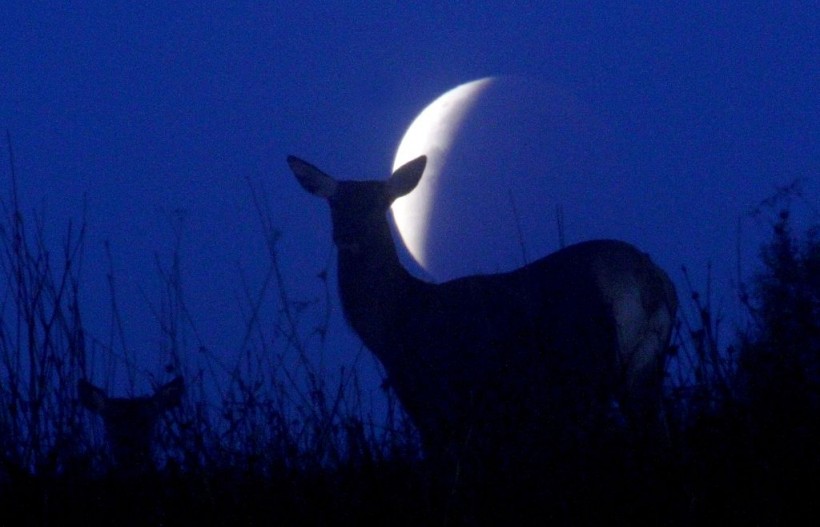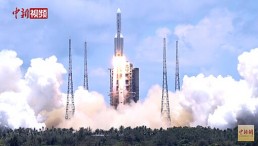The Chang'e 5 lunar lander from China has returned the first on-site proof of water on the moon's surface.
The moon has long been assumed to be completely dry, but scientists only discovered water on its surface a little more than a decade ago.
Their conclusions had previously been based on orbital observations. Still, according to the current research, the lander discovered evidence of water molecules or a chemically related hydroxyl.
Researchers detailed their study, titled "In Situ Detection of Water on the Moon by the Chang'E-5 Lander," in Science Advances.

Reindeer are seen silhouetted against the moon during a lunar eclipse near the village of Yavterishki, some 250 kilometers north of Minsk, on September 28, 2015. The combination of a supermoon and total lunar eclipse occurred in 1982 and will not happen until 2033.
Chang'e 5 Finds Water on The Moon
Chang'e-5 returned lunar rock samples in late 2020, Science Times said. Since then, the lander has been conducting further studies, including analyzing lunar water properties.
The majority of the water in the lunar soil is assumed to have come from "solar wind," which carried hydrogen atoms to the moon's surface, Eurekalert said. They interacted with oxygen in the surface minerals to generate water and hydroxyl.
The lunar soil has a water content of fewer than 120 parts per million (ppm), or around 120g water per tonne, according to Chang'e 5's lander, which used a mineralogical spectrometer to analyze the chemical composition of rocks and soil at the landing site.
The water content in the rock, on the other hand, was about 180 ppm, News9 added. The researchers believe it was a discrepancy due to the rock coming from below the surface, where there may be an additional water source.
ALSO READ: Chang'e 5 Says Moon Was Volcanically Active Longer Than People Thought Based on Lunar Rock Samples
Moon Dried Over Time
The study discovered that the moon has become drier over time, most likely due to the degassing of its mantle reservoir.
Chang'e-5 landed on one of the moon's youngest mare basalts, positioned at a mid-high latitude. It took samples measuring 1,731 grams and analyzed water on the spot.
Lin Honglei, a researcher with the Institute of Geology and Geophysics under CAS, told Xinhua that the granules on the surface and beneath the surface of the returning samples are a mix.
Lin also stated that simulating real lunar surface conditions on Earth is difficult, so in-situ measurements are so important.
The findings are compatible with long-term volcanic eruptions in the Oceanus Procellarum region of the terrain denoted by the abbreviation KREEP, a geochemical composition unit (potassium, rare earth elements, phosphorus). The discovery also adds to the background for analyzing the materials returned by the expedition.
Previous Discoveries
Years of earlier research on the water on the moon have led to this discovery. The satellite was assumed to be fully dry when the Apollo astronauts first returned from the moon in 1969.
Water molecules were identified in lunar rocks for the first time in 2007. NASA verified the presence of water ice in permanently shadowed craters near the moon's poles in 2018 and declared two years later that water was broadly dispersed over the lunar surface.
The discoveries add to the mystery surrounding China's Chang'e-6 and Chang'e-7 missions. The exploration of lunar water reserves is becoming more prominent since human lunar outposts are planned in the coming decades.
RELATED ARTICLE: China Launched 55 Flights to Tiangong Space Station in 2021; Signs New 5-Year Cooperation Program With Russia
Check out more news and information on Space on Science Times.














